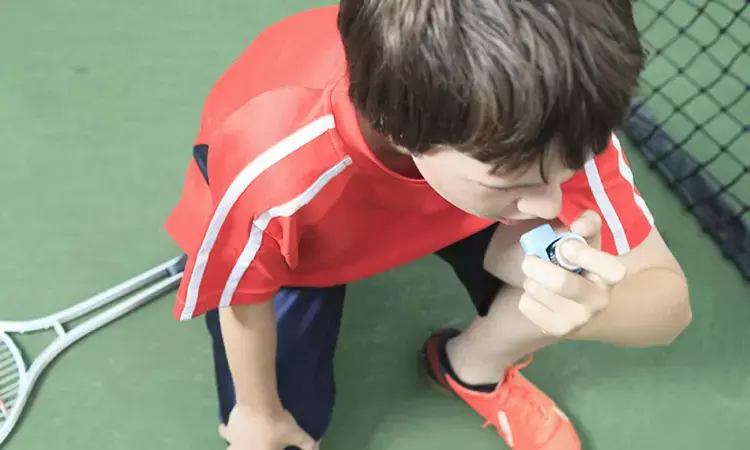- Home
- Medical news & Guidelines
- Anesthesiology
- Cardiology and CTVS
- Critical Care
- Dentistry
- Dermatology
- Diabetes and Endocrinology
- ENT
- Gastroenterology
- Medicine
- Nephrology
- Neurology
- Obstretics-Gynaecology
- Oncology
- Ophthalmology
- Orthopaedics
- Pediatrics-Neonatology
- Psychiatry
- Pulmonology
- Radiology
- Surgery
- Urology
- Laboratory Medicine
- Diet
- Nursing
- Paramedical
- Physiotherapy
- Health news
- Fact Check
- Bone Health Fact Check
- Brain Health Fact Check
- Cancer Related Fact Check
- Child Care Fact Check
- Dental and oral health fact check
- Diabetes and metabolic health fact check
- Diet and Nutrition Fact Check
- Eye and ENT Care Fact Check
- Fitness fact check
- Gut health fact check
- Heart health fact check
- Kidney health fact check
- Medical education fact check
- Men's health fact check
- Respiratory fact check
- Skin and hair care fact check
- Vaccine and Immunization fact check
- Women's health fact check
- AYUSH
- State News
- Andaman and Nicobar Islands
- Andhra Pradesh
- Arunachal Pradesh
- Assam
- Bihar
- Chandigarh
- Chattisgarh
- Dadra and Nagar Haveli
- Daman and Diu
- Delhi
- Goa
- Gujarat
- Haryana
- Himachal Pradesh
- Jammu & Kashmir
- Jharkhand
- Karnataka
- Kerala
- Ladakh
- Lakshadweep
- Madhya Pradesh
- Maharashtra
- Manipur
- Meghalaya
- Mizoram
- Nagaland
- Odisha
- Puducherry
- Punjab
- Rajasthan
- Sikkim
- Tamil Nadu
- Telangana
- Tripura
- Uttar Pradesh
- Uttrakhand
- West Bengal
- Medical Education
- Industry
Bronchiolitis in infants has different subtypes with differing risks of asthma: Study

Our data add significant support to the emerging concept that bronchiolitis represents several diseases with unique biological mechanisms.
USA: Respiratory syncytial virus (RSV) bronchiolitis consists of four distinct molecular subtypes and a certain subtype is associated with greater asthma risk, according to a recent study in the journal Nature Communications.
Based on their analyses, four biologically and clinically meaningful subtypes, or endotypes, of RSV bronchiolitis exist. Of these, one endotype--which is characterized by coinfection by rhinovirus, dominance by specific bacteria, and high interferon (antiviral) response--had an approximate 40% risk of developing asthma by age five.
Bronchiolitis is the most common lung infection in young children which is most often caused by RSV and is the leading cause of hospitalizations in U.S. infants and about 30% of those with severe bronchiolitis later develop asthma.
"While bronchiolitis has been considered a single disease with similar mechanisms, emerging evidence has suggested that bronchiolitis consists of multiple disease subgroups," says lead author Yoshihiko Raita, MD, MMSc, a researcher in the MGH Department of Emergency Medicine. "But our limited understanding of RSV bronchiolitis, and how it varies, has held up efforts to develop RSV bronchiolitis treatment and asthma prevention strategies."
To provide insights, Raita and his colleagues analyzed diverse clinical, genetic, and molecular data from 221 infants hospitalized with RSV bronchiolitis who were followed until five years of age. The scientists gathered information on the viruses that had infected the children, as well as information on the microbes, metabolites and immune response-related molecules present in the children's nasal passages.
"Our data add significant support to the emerging concept that bronchiolitis represents several diseases with unique biological mechanisms," says Raita. "For clinicians, our findings give an evidence base for the early identification of high-risk children during an important period of airway development: early infancy. For researchers, our data offer new avenues for the development of subgroup-specific strategies--such as fine-tuning the airway immune response and microbiome--for treating bronchiolitis and preventing asthma."
Reference:
The study titled, "Integrated omics endotyping of infants with respiratory syncytial virus bronchiolitis and risk of childhood asthma," is published in the journal Nature Communications.
DOI: https://www.nature.com/articles/s41467-021-23859-6
Hina Zahid Joined Medical Dialogue in 2017 with a passion to work as a Reporter. She coordinates with various national and international journals and association and covers all the stories related to Medical guidelines, Medical Journals, rare medical surgeries as well as all the updates in the medical field. Email: editorial@medicaldialogues.in. Contact no. 011-43720751
Dr Kamal Kant Kohli-MBBS, DTCD- a chest specialist with more than 30 years of practice and a flair for writing clinical articles, Dr Kamal Kant Kohli joined Medical Dialogues as a Chief Editor of Medical News. Besides writing articles, as an editor, he proofreads and verifies all the medical content published on Medical Dialogues including those coming from journals, studies,medical conferences,guidelines etc. Email: drkohli@medicaldialogues.in. Contact no. 011-43720751


